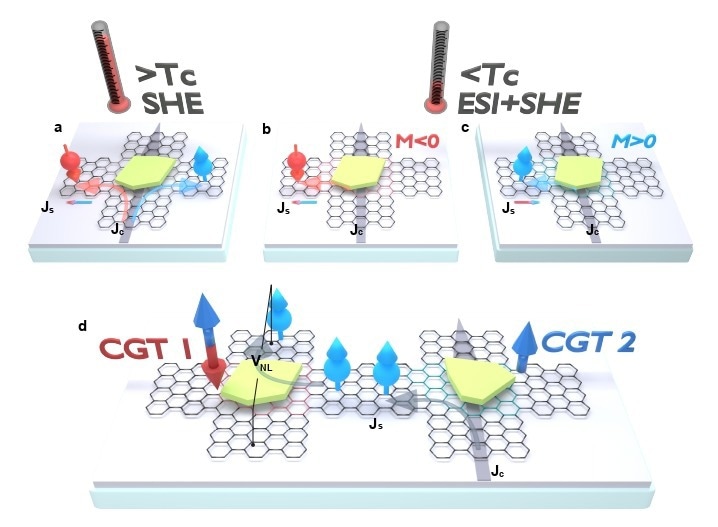Reviewed by Lexie CornerNov 26 2024
Researchers from CIC nanoGUNE have created the first seamless 2D spintronics system using only proximitized materials. By positioning materials near the van der Waals magnet Cr2Ge2Te6, they developed a two-dimensional graphene spin valve. This study, published in Nature Electronics, lays the foundation for a new area of research and technological advancements in spintronics.

Image Credit: CIC nanoGUNE
Since the discoveries of spin injection and giant magnetoresistance in the 1980s, which relied on spin-polarized electron injection from a ferromagnetic metal to a normal metal, the field of spintronics has advanced significantly.
Albert Fert and Peter Grünberg were awarded the 2007 Nobel Prize in Physics for these discoveries, which paved the way for further exploration of complex material combinations and interface optimization strategies.
Pristine graphene is considered a potential ideal medium for carrying spin information. By introducing spin-orbit coupling or magnetic exchange coupling, graphene can be used to create and detect spins. Proximity effects occur when an adjacent material influences the properties of a nearby material. However, creating flawless spintronic devices that rely solely on proximity effects remains a challenge.
In collaboration with Laboratoire Albert Fert in France, UPV/EHU and Donostia International Physics Center (DIPC) in San Sebastián, IMEC in Belgium, and Beihang University in China, the Nanodevices group at CIC nanoGUNE in San Sebastián developed the first seamless 2D spintronics device made entirely of proximitized structures. This device enables spin manipulation and transport within the 2D plane.
We created a lateral spin valve made of a single piece of graphene, which is locally functionalized by proximity using the van der Waals magnetic insulator Cr2Ge2Te6. The central component of this all-2D spin valve, proximitized graphene, is observed to present the coexistence of spin-orbit proximity and magnetic proximity.
Haozhe Yang, Study First Author and Associate Professor, Beihang Unversity
Yang was a Postdoc fellow at CIC nanoGUNE during the research.
The technological performance of the proximitized device, which is made using only the proximity effect, is poised to capture the attention of a wide range of researchers in the electronics and spintronics community.
Fèlix Casanova, Ikerbasque Research Professor and Study Co-Leader, CIC nanoGUNE
This novel structure enables the development of "proximitronic" devices and provides evidence that the proximity effect can be used to construct essential electronic components. By removing interfaces from devices, this approach allows for the creation of a smooth junction that reduces spin loss.
This straightforward yet innovative all-proximitized spintronic device could lead to further studies to improve the understanding and use of the proximity effect. The proximitized device has the potential to open up a new area of research due to its fundamental importance and possible applications.
Journal Reference:
Yang, H., et al. (2024) A seamless graphene spin valve based on proximity to van der Waals magnet Cr2Ge2Te6. Nature Electronics. doi.org/10.1038/s41928-024-01267-0.